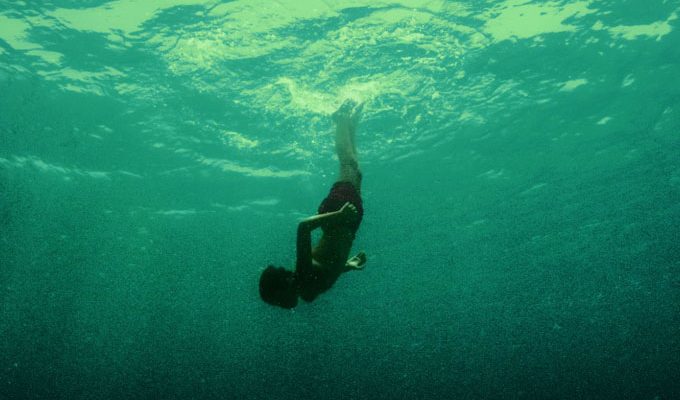Cloaked in a mystifying atmosphere and possessed by a transfixing, amorphous mood, Lucile Hadzihalilovic‘s “Evolution” is a beautifully strange hybrid of innocence and disturbance. “Unique” is the immediate descriptor that springs to mind once it ends, but the film’s singularity has traces of David Cronenberg‘s early body horrors, fragments of Carl Theodor Dreyer‘s spiritual contours, and a dash of Jean Painlevé for its fascination with the sea. Famed underwater-explorer Jacques Cousteau famously proclaimed that “the sea, once it casts its spell, holds one in its net of wonder forever.” Painlevé’s short films on oceanic fauna contain the same effects of this spell, and the quote applies remarkably well to the feelings evoked in “Evolution,” which spreads its net wide. Hadzihalilovic creates a nightmarish lullaby that nestles itself into the unsuspecting viewer like some alien organism, engendered to haunt one’s mind with a phantasmagorical presence.
Those in need of unambiguous narratives are advised to spend their time elsewhere, for they’ll find little to love in “Evolution.” As the jaw-dropping opening sequence suggests, Hadzihalilovic boldly embraces a meditative sort of visual storytelling, banishing exposition from her film’s island forever. The opening shot looks up at the glimmering sun rays from a seabed angle (you could say, a starfish-point-of-view), before expanding into a breathtaking wide shot of pelagic flora and fauna, full of glory and color. Stunning doesn’t even begin to describe it. 10-year-old Nicolas (
Max Brebant) dives in, and the scenic flow is suddenly interrupted by a brisk set of cuts as he sees a rotting corpse, and a blood-red starfish on its belly. It’s an effective beginning for a frightfully fascinating journey, not least of all because it indicates how superbly controlled Hadzihalilovic’s direction is. In less than five minutes, she has introduced developing life to corroding death in an environment untouched by man.
READ MORE: The 20 Most Anticipated Films Of The 2015 Toronto International Film Festival
Split into two distinct parts, the liquified plot follows Nicolas, a boy who can’t help but question his peculiar surroundings. In the first part, we see his daily routines on a remote island, populated only by women with blonde eyebrows and young boys just like him. His mother (Julie-Marie Parmantier) feeds him what looks like boiled seaweed, and gives him four drops of a strange, ink-like, substance to drink. “Medicine,” she calls it. In one of opening scenes, the other boys find a dead squid and invite Nicolas to come out and bury it with them. His look of intent and wonder as the boys defile the lifeless mollusk defines one of the film’s major motifs: the contortion of organic life-form, and the contemplation of death. The second part moves us indoors, into a ghoulish hospital, which doesn’t look like it’s in the business of curing anyone anytime soon. Nicolas sparks an unlikely connection with one of the nurses, Stella (Roxane Duran), and the film continues to stare deeper and deeper into the abyss from there on out.
The glacial pace injects each scene with an icy force that continuously runs up and down the spine, but it’s Manuel Dacosse‘s cinematography that is the towering centerpiece of “Evolution.” Ranging from magnificent long shots of crashing waves to morbidly extreme close-ups of living things, it has an elegiac quality of a requiem for a sleeping God, and beckons the viewer ever closer through every frame. Where most films build towards a climax by checking off plot points, Hadzihalilovic composes her scenes in a way that builds through atmosphere. While the narrative remains sparse throughout — at one point getting slightly unhinged and self-involved — the hypnotic arrangements of oddities, hallucinations, and lucid nightmares is seductive enough to easily dismiss all conventions.
For those who have seen Hadzihalilovic’s similarly mystifying “
Innocence,” expectations were set for the unexpected, but “Evolution” still manages to defy them. The director’s own note on the film mentions the paintings of
Giorgio de Chirico as inspiration for the film’s universe. He founded the metaphysical art movement in Italy, which went on to inspire the surrealists, and is said to have “painted that which cannot be seen.” Hadzihalilovic, by bridging an innocent theme like childhood with a presence full of disturbing connotations, attains a remarkably enchanting balance with cinema’s tools. One that can never be seen, but only experienced in the purest sense of the word. [A-]
Click here for our complete coverage of the 2015 Toronto International Film Festival

